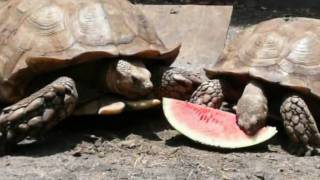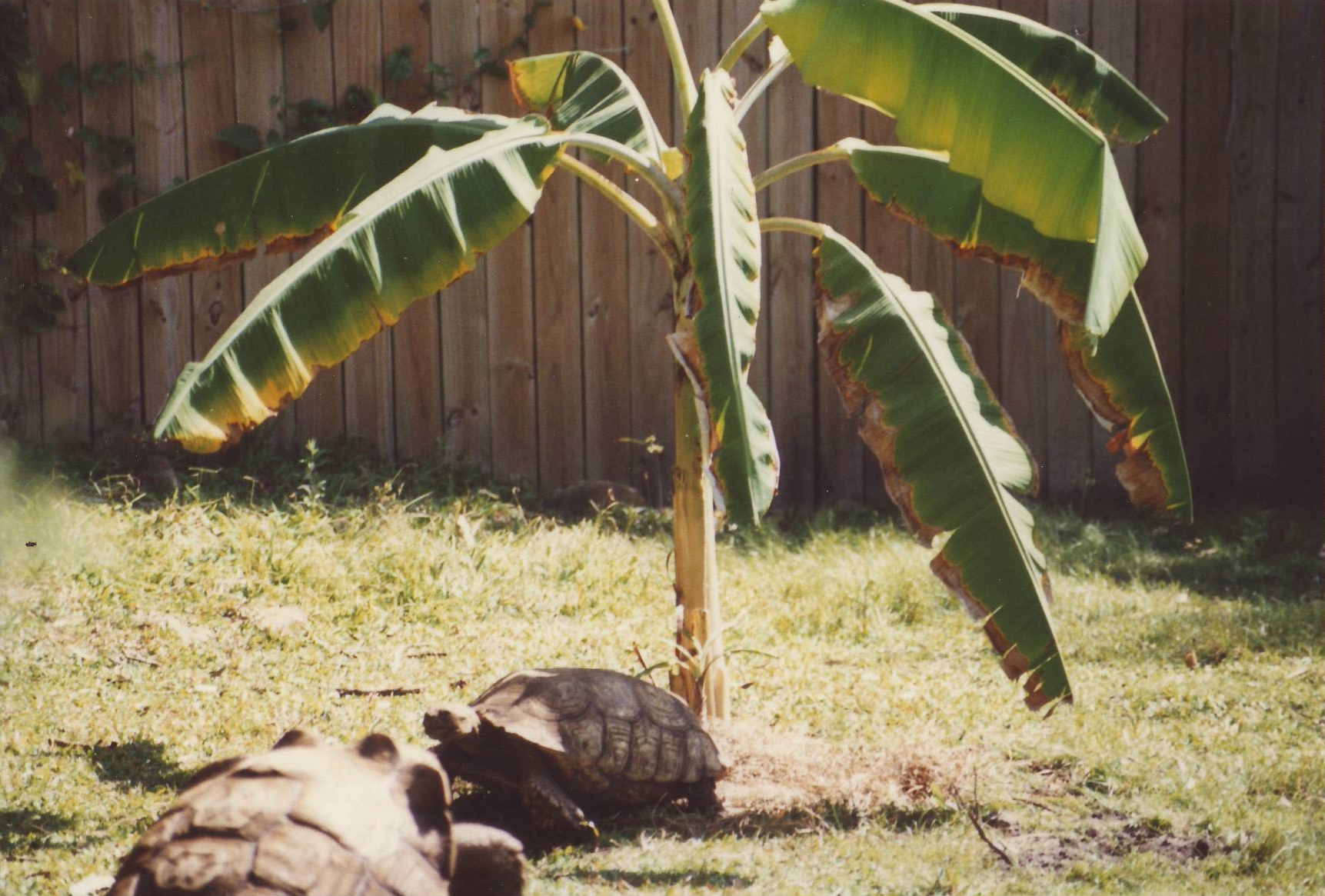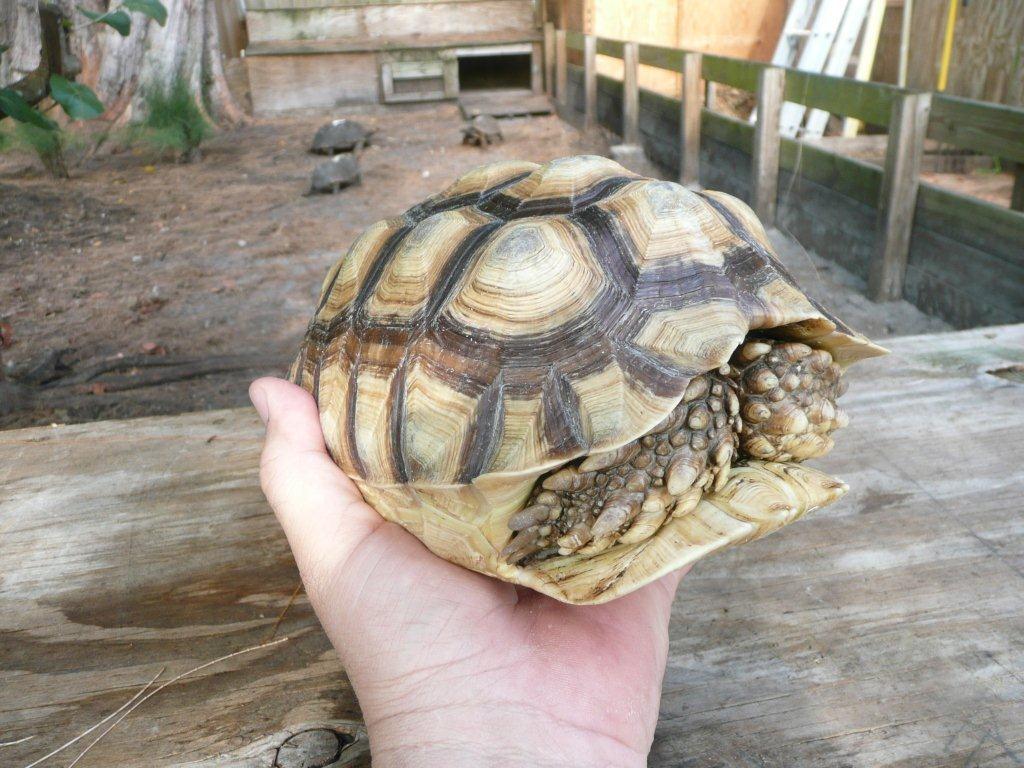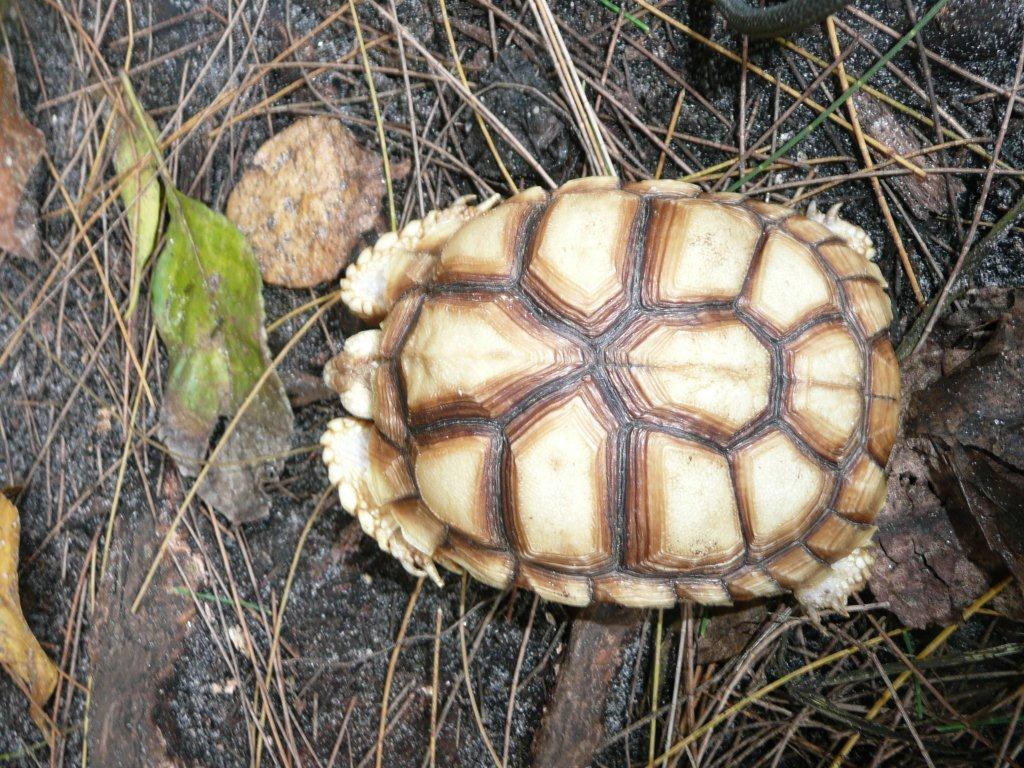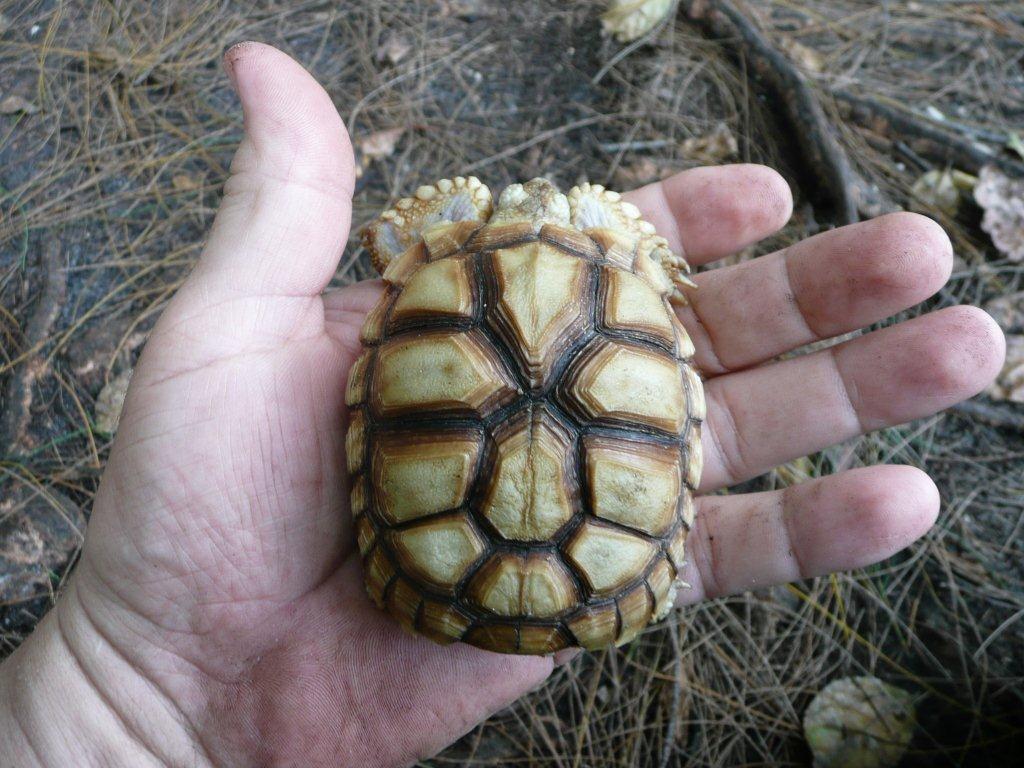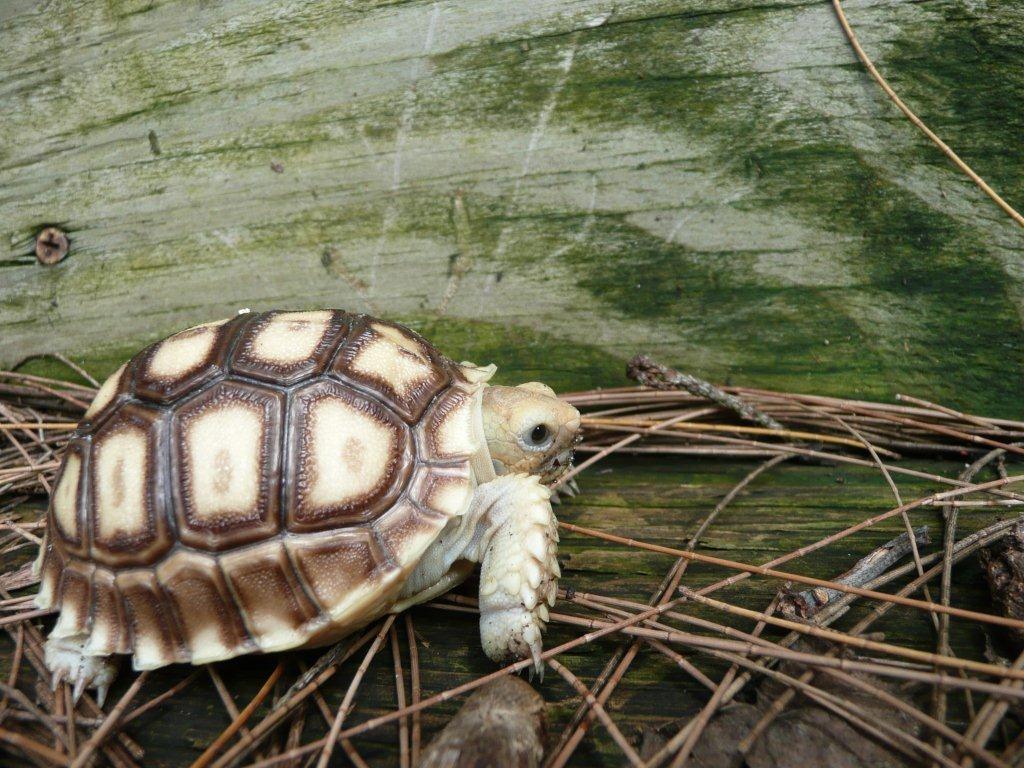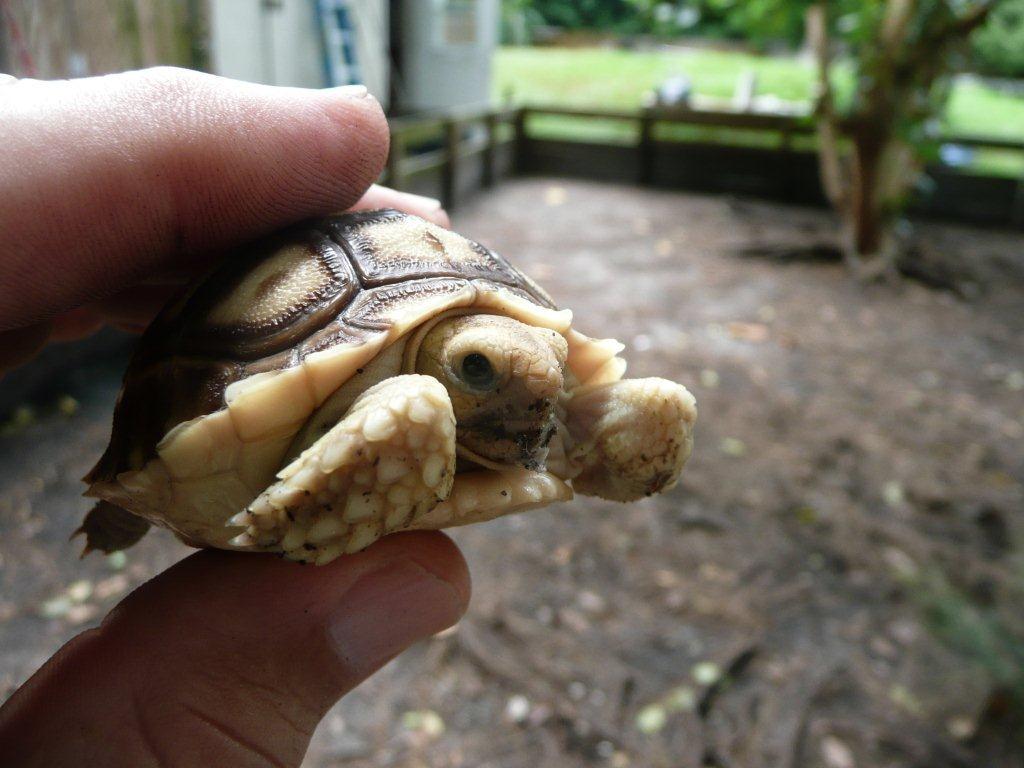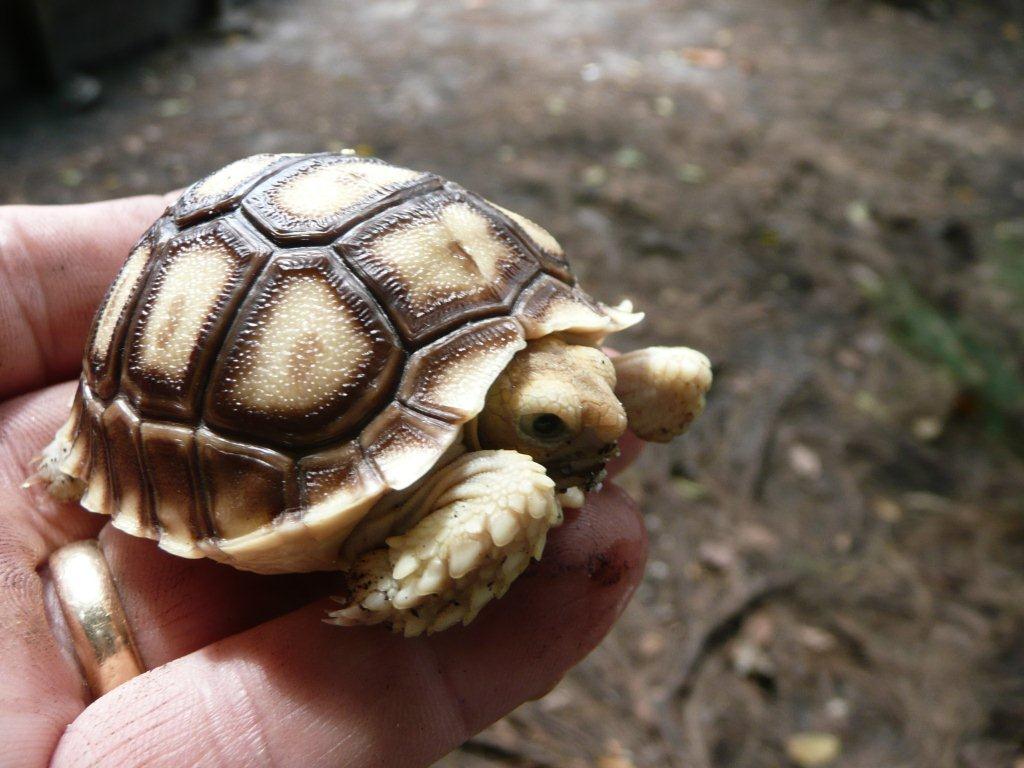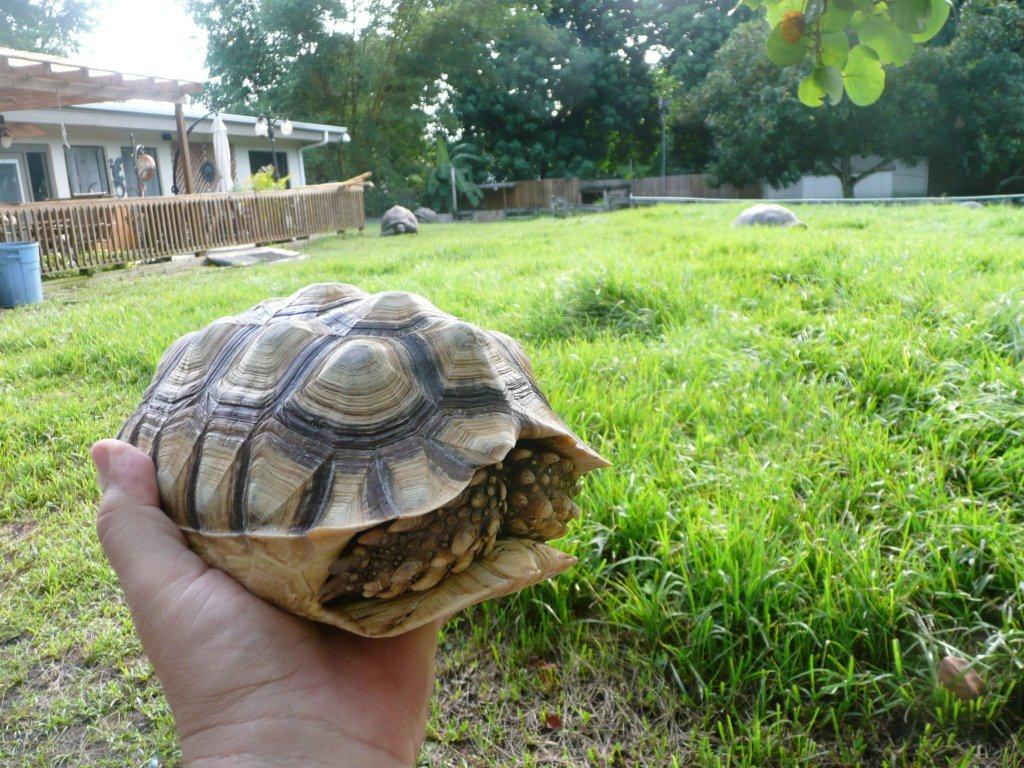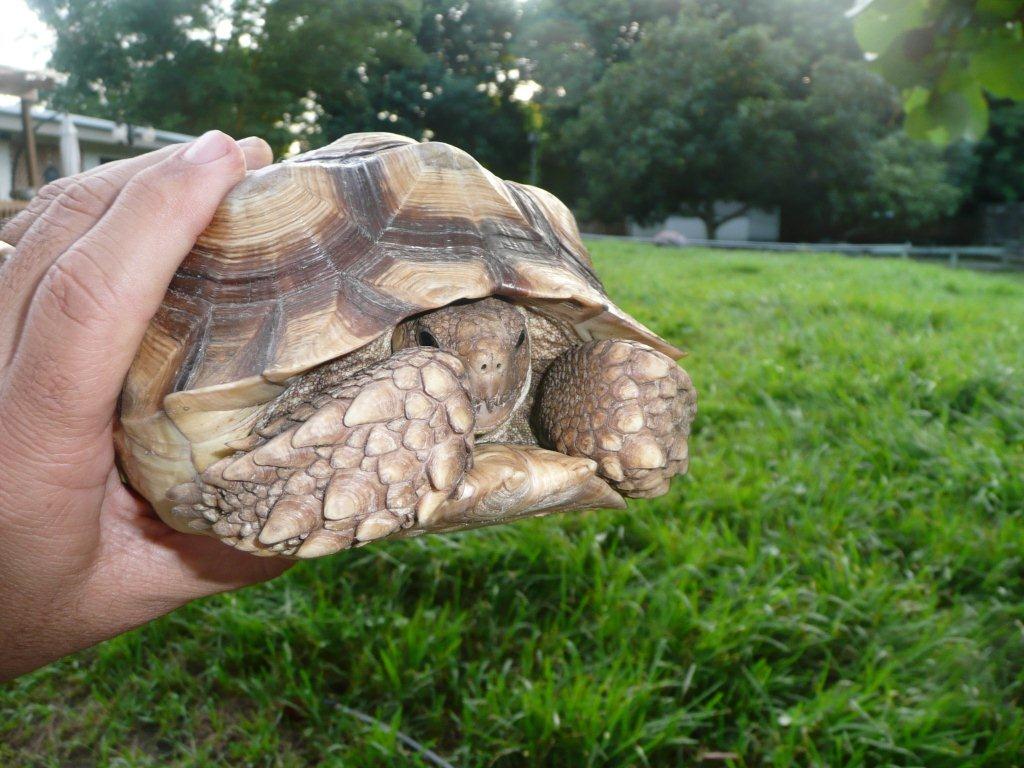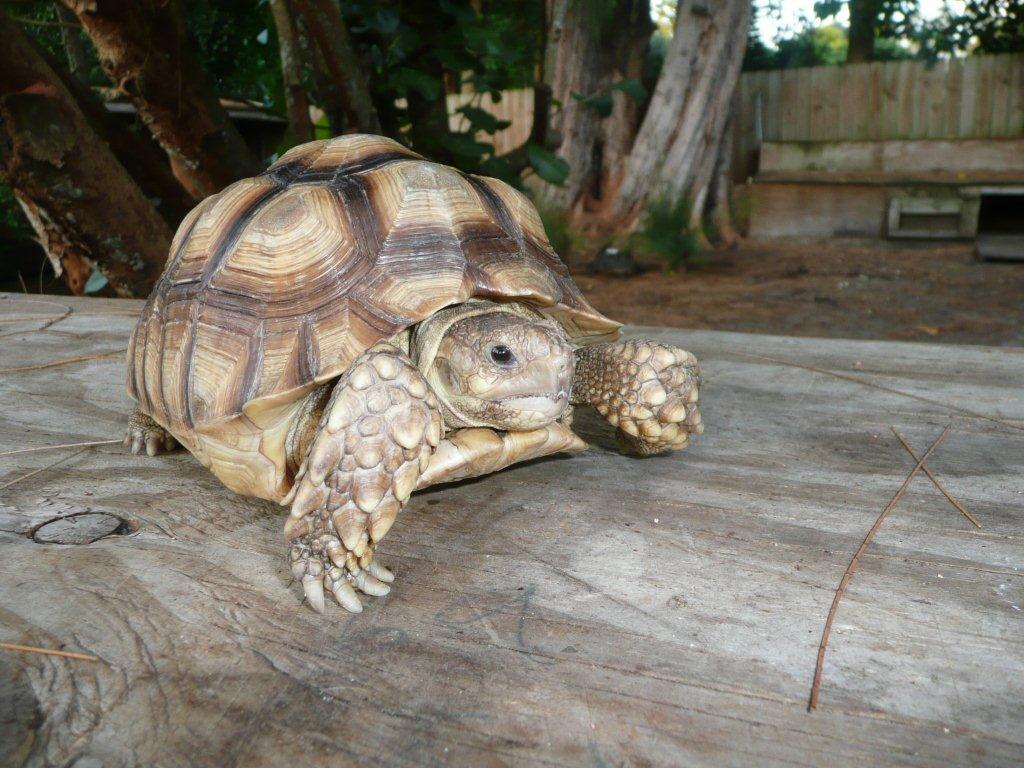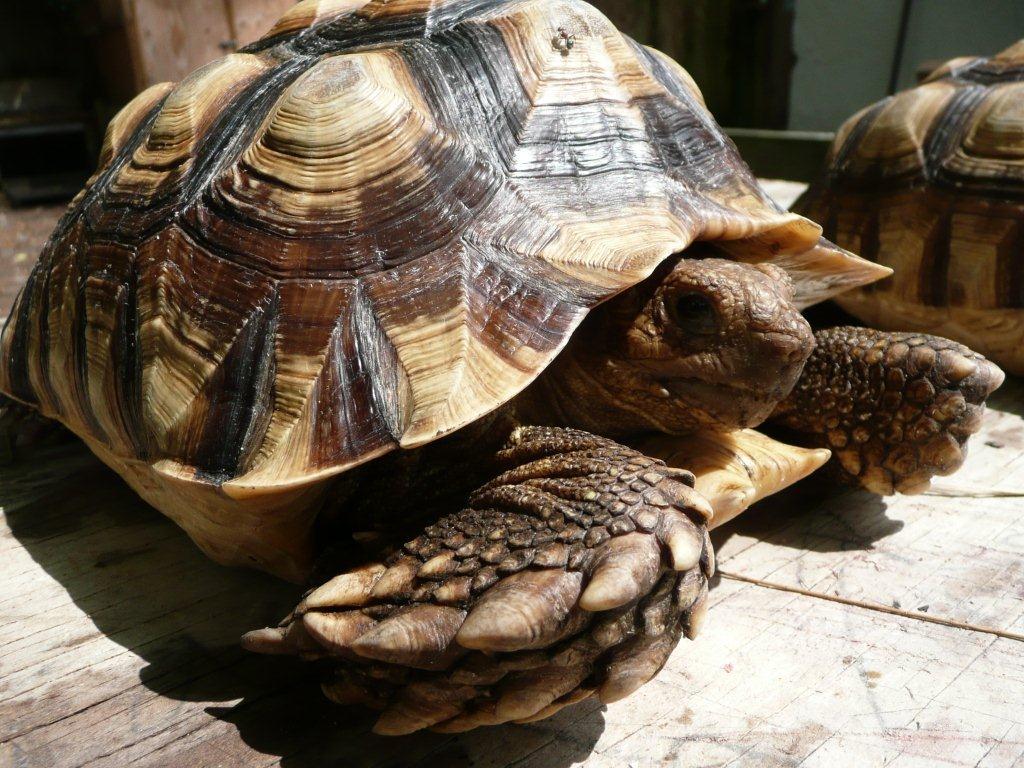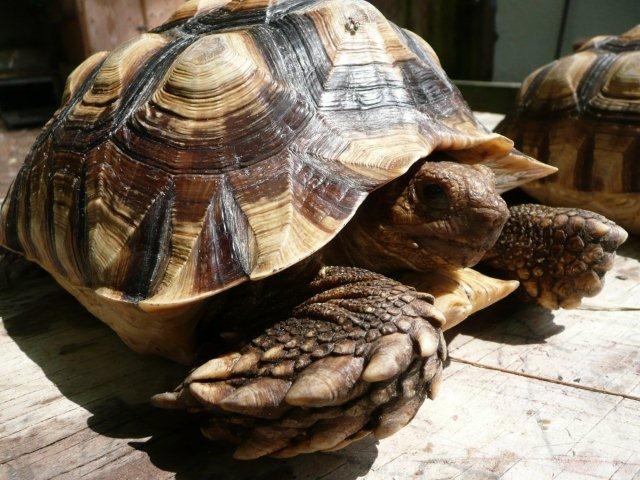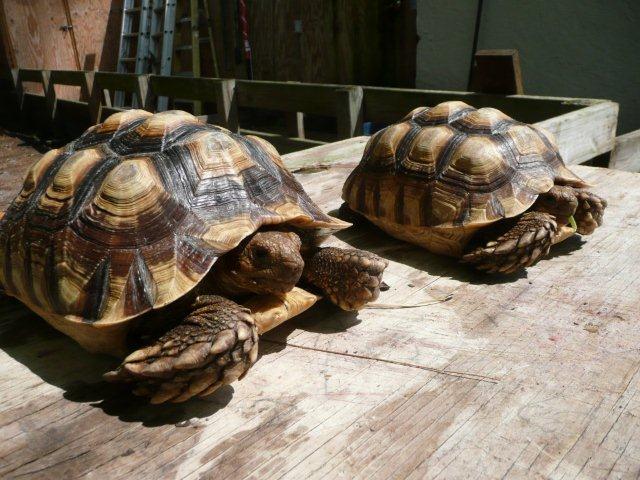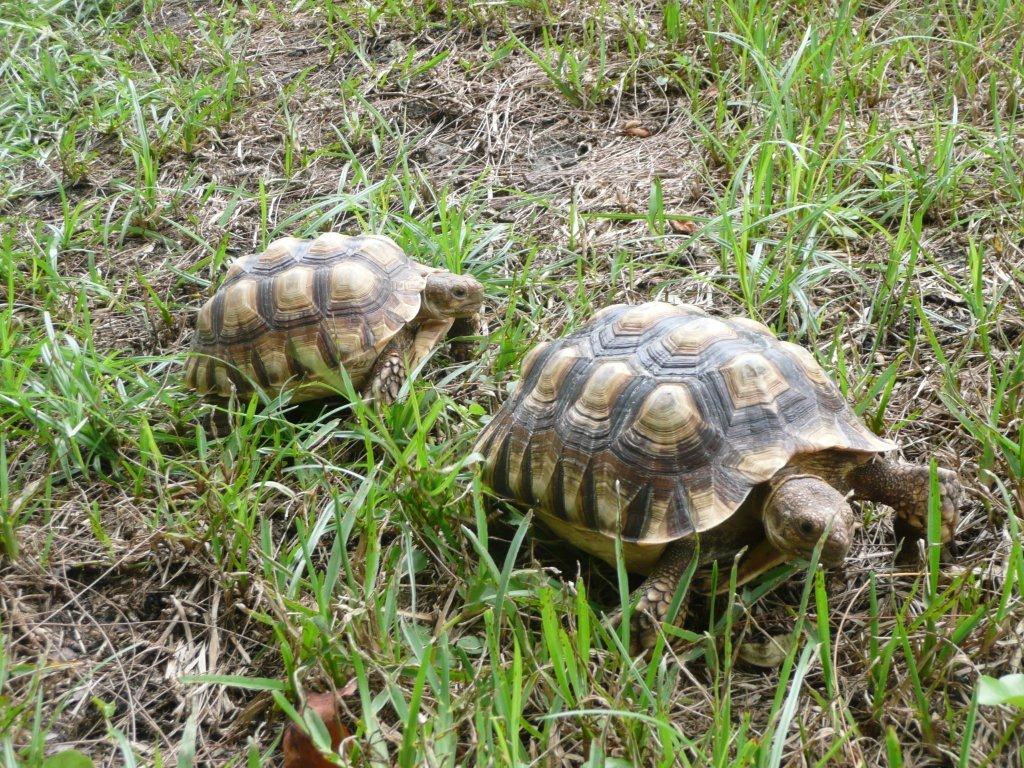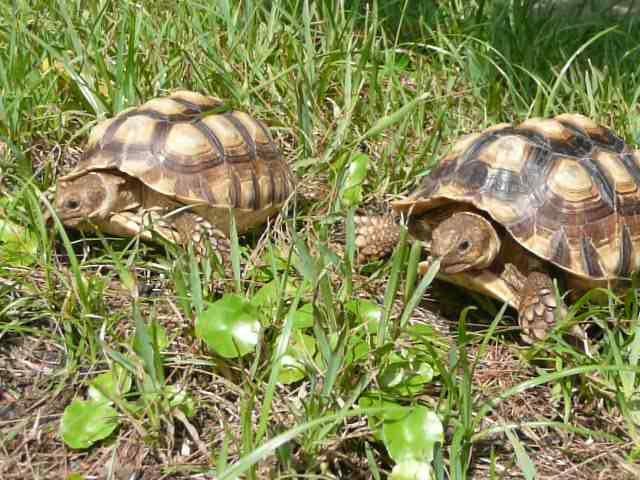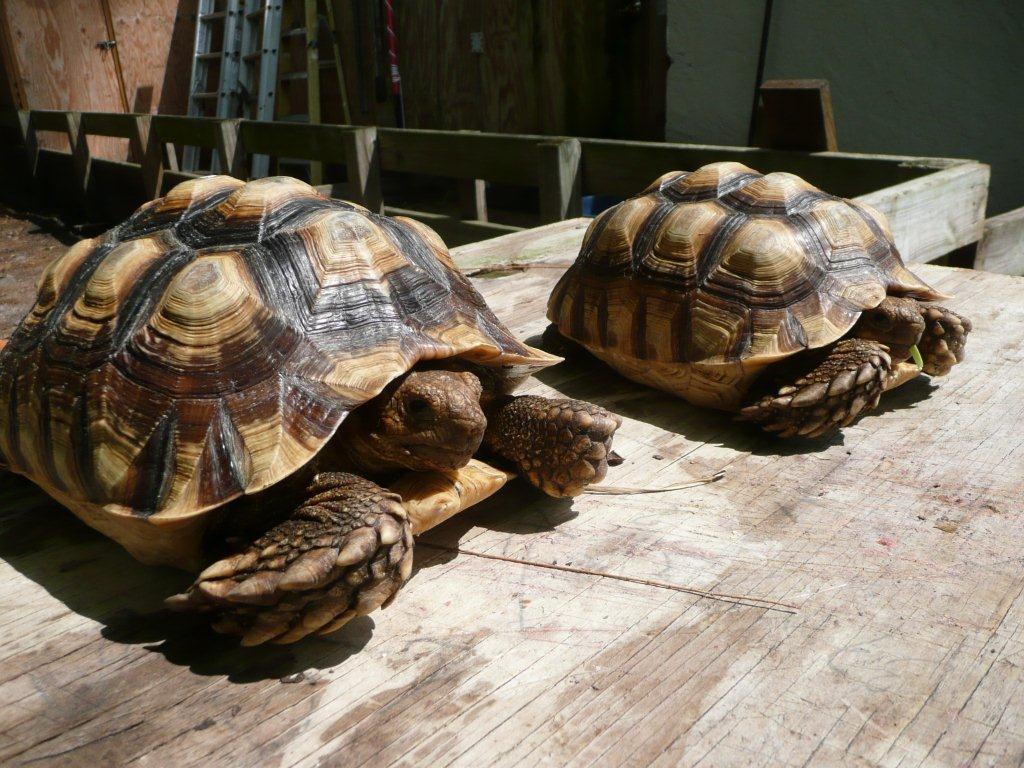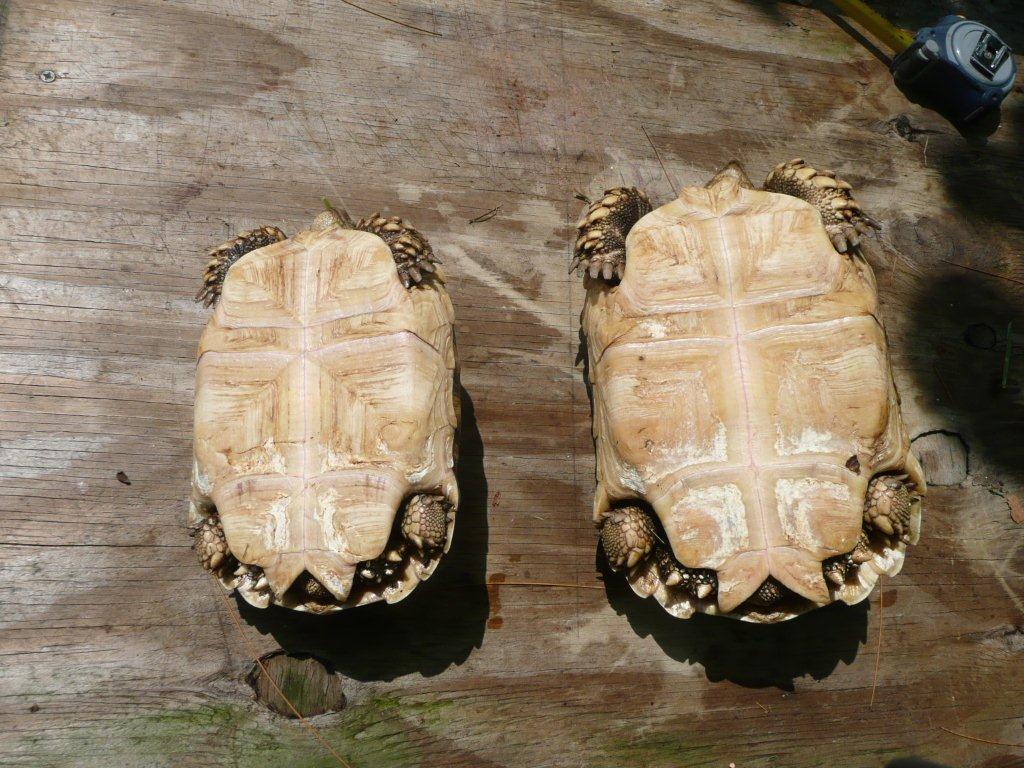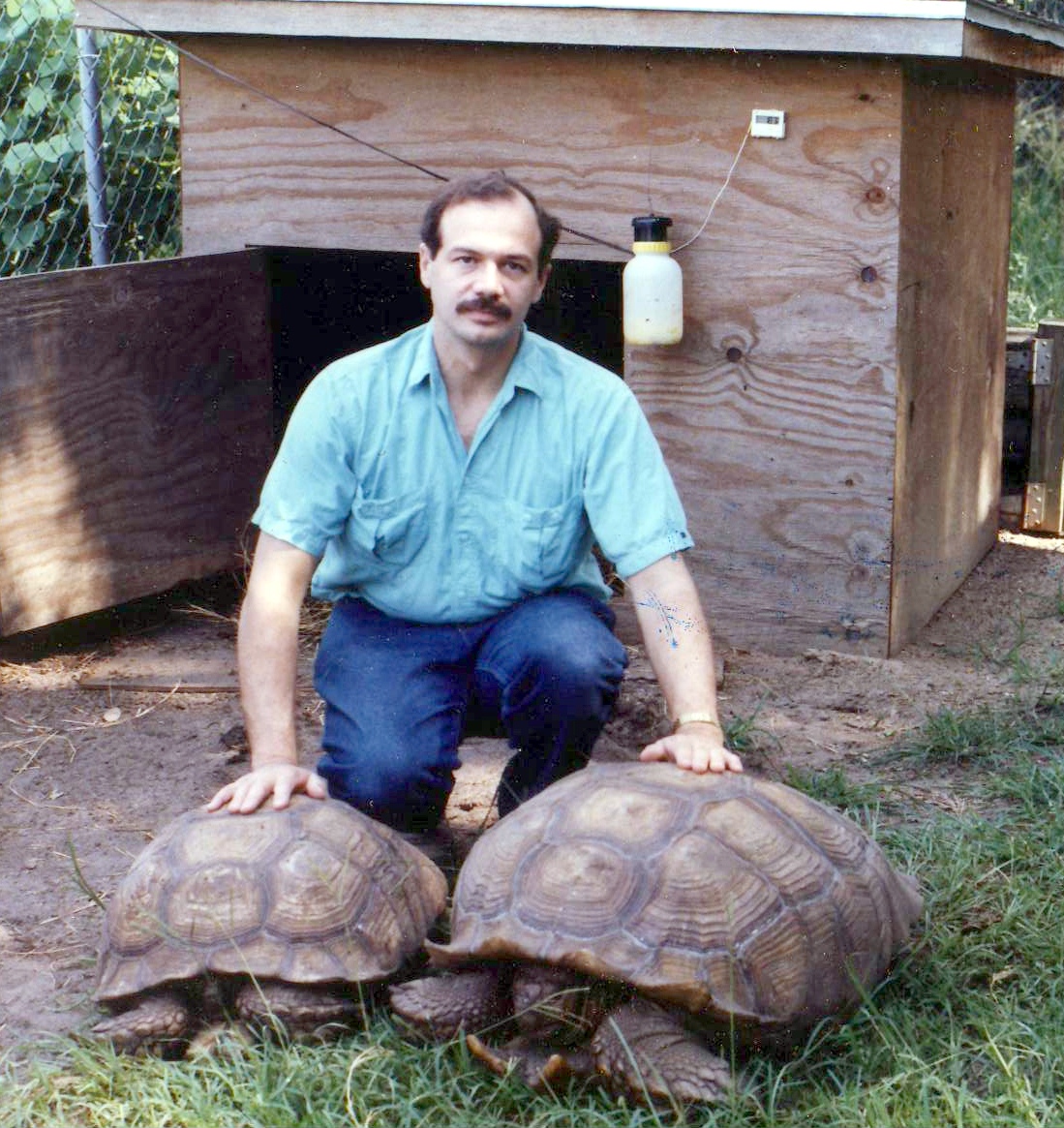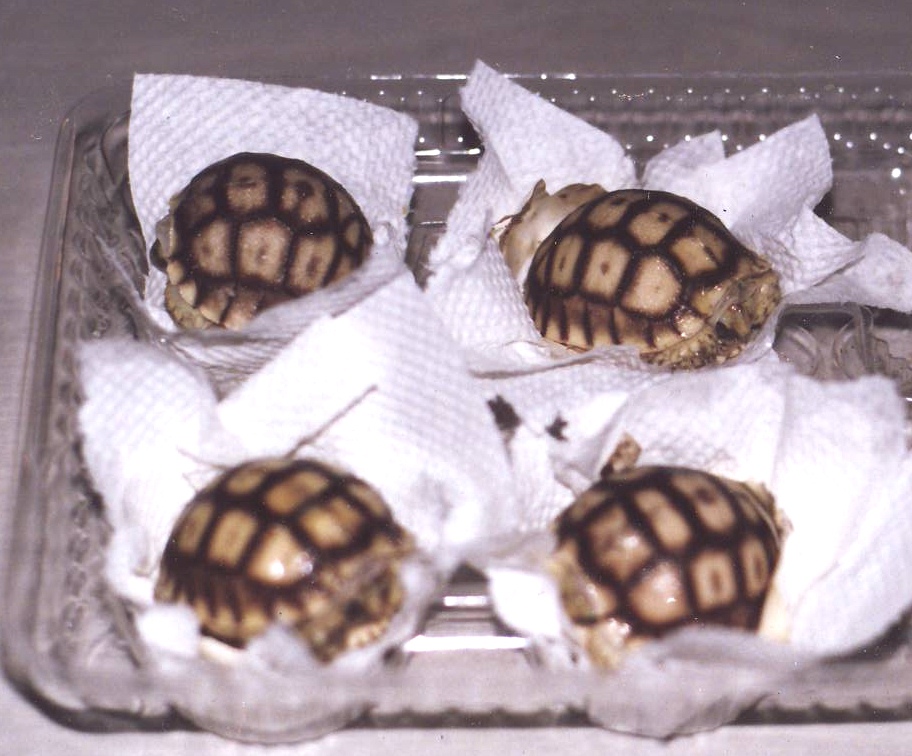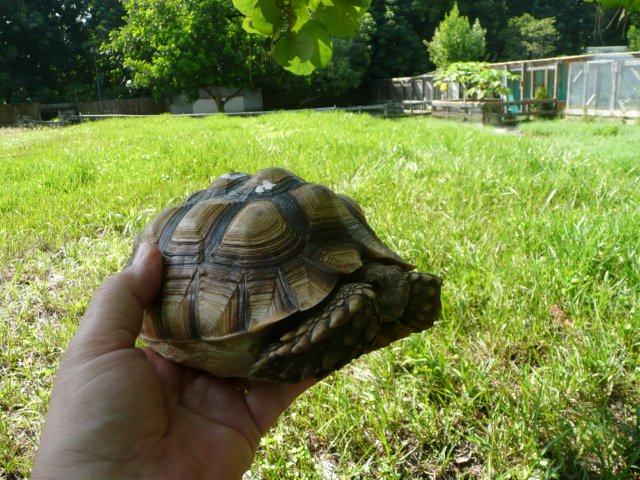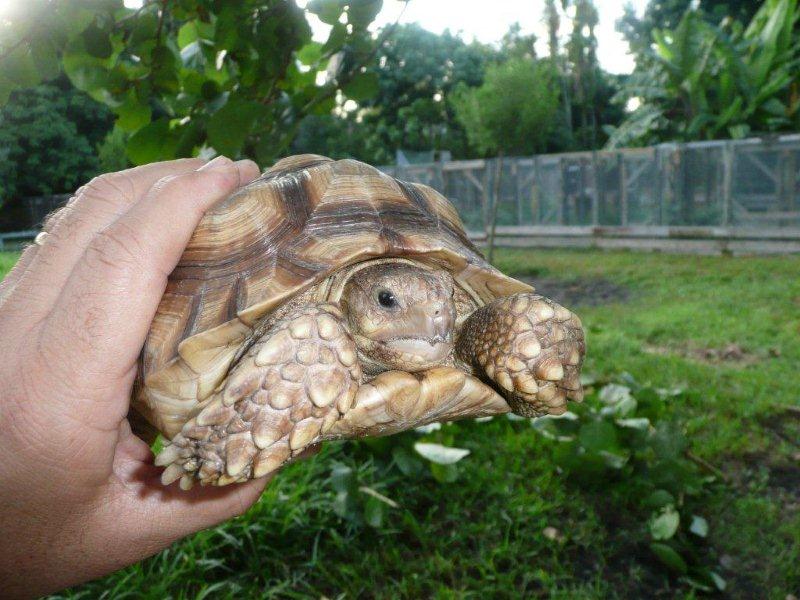African Spur
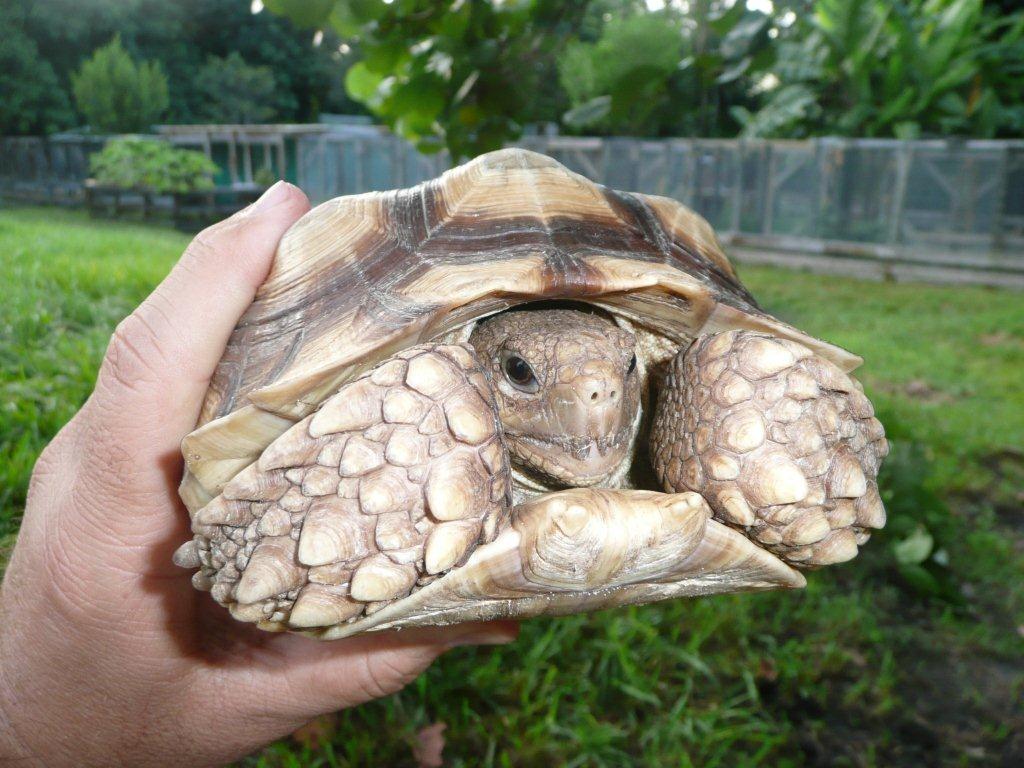
The African Spurred Tortoise (Geochelone sulcata), also called the African Spur Thigh Tortoise, is a species of tortoise which inhabits the southern edge of the Sahara desert, in northern Africa. It is the third largest species of tortoise in the world and the largest species of mainland tortoise (not found on an island).
African Sulcata Adult Videos
African Sulcata Adult Descriptions
Life Span:
50+ years
Size:
Up to 36 Inches long and 100 lbs. when full grown
Food / Diet:
Your tortoise will need a diet high in fiber and calcium and low in fat and protein from a plant-based source. Hays and dark greens that are pesticide-free should provide three fourths of the diet. The remaining quarter of the diet should include organic romaine lettuce, collard greens, rye grass, clovers. Fruit may be offered as an occasional treat.
Feeding Procedures:
Each day calcium should be dusted on vegetables should be shopped into small pieces and provided in variety to avoid diseases. Once a week vitamin and mineral supplements should be added to the food to help provide a healty diet for your tortoise.
Habitat:
The African Spur Tortoise will require a secure outdoor habitat with room for it to move freely. Most Tortoises are well known for eating substrate so make sure the floor of their houseing is deep enough for burrowing and made of something digestible such as alfalfa pellets. It is important that your African Spur have a water bowl with clean fresh chlorine-free water daily. The container should allow the animal to easily get in and out of but large enough to allow them to soak in and drink from. A full spectrum fluoresent lighting with UVB rays is important for 12 to 14 hours a day, unless outdoors in a warm climate. Temperature is important to the safety of your animal so make sure they stay in a range of 85 F to 75 F degrees.
Taxonomy and etymology
Its generic name is a combination of two Greek words:Geo(?a?a) meaning "earth" or "land" and Chelone(?e????) meaning "tortoise". Its specific name sulcata is from the Latin word sulcus meaning "furrow" and refers to the furrows on the tortoise's scales.
Range and habitat
Sahel of Sahara Desert TortosieThe African Spurred Tortoise is native to the Sahara Desert and the Sahel, a transitional ecoregion of semi-arid grasslands, savannas, and thorn shrublands found in the countries of Burkina Faso, Chad, Eritrea, Ethiopia, Mali, Mauritania, Nigeria, Senegal and Sudan In these arid regions the tortoise excavates burrows in the ground to get to areas with higher moisture levels spending the hottest part of the day in these burrows. Burrows may average 30 inches in depth; some dig tunnel systems extending 10 feet or more underground.
Size and lifespan
The Sulcata is the third largest species of tortoise in the world after the Galapagos tortoise, and Aldabra Giant Tortoise; and the largest of the mainland tortoises. Adults are usually 18 inches (45 cm) in shell length, and weigh 70 to 100 pounds. Specimens with 24 to 36 inch long (60-90 cm) shells weighing 150 pounds (70 kg) are not unknown. They grow from hatchling size (2-3 inches) very quickly, reaching 6-10 inches (15-25 cm) within the first few years of their lives. The oldest known of this species was 56 years old although it is believed they can live up to about 80 years.
Breeding
Copulation takes place right after the rainy season, during the months from September through November. Males combat each other for breeding rights with the females and are vocal during copulation.
Sixty days after mating,the female begins to roam looking for suitable nesting sites. For five to fifteen days, four or five nests may be excavated before she selects the perfect location in which the eggs will be laid.
Loose dirt is kicked out of the depression, and the female may frequently urinate into the depression. Once it reaches approximately 2 feet (60 cm) in diameter and approximately 3-6 inches (7-14 cm) deep, a further depression, measuring some eight inches (20 cm) across and in depth, will be dug out towards the back of the original depression. The work of digging the nest may take up to five hours; the speed with which it is dug seems to be dependent upon the relative hardness of the ground. It usually takes place when the ambient air temperature is around 78 F (27 C). Once the nest is dug, the female begins to lay an egg every three minutes. Clutches may contain 15-30 or more eggs. After the eggs are laid, the female fills in the nest, taking an hour or more to fully cover them all.
African Sulcata Adult Breeding Program
Copulation takes place right after the rainy season, during the months from September through November. Males combat each other for breeding rights with the females and are vocal during copulation. Sixty days after mating,the female begins to roam looking for suitable nesting sites. For five to fifteen days, four or five nests may be excavated before she selects the perfect location in which the eggs will be laid. Loose dirt is kicked out of the depression, and the female may frequently urinate into the depression. Once it reaches approximately 2 feet (60 cm) in diameter and approximately 3-6 inches (7-14 cm) deep, a further depression, measuring some eight inches (20 cm) across and in depth, will be dug out towards the back of the original depression. The work of digging the nest may take up to five hours; the speed with which it is dug seems to be dependent upon the relative hardness of the ground. It usually takes place when the ambient air temperature is around 78 F (27 C). Once the nest is dug, the female begins to lay an egg every three minutes. Clutches may contain 15-30 or more eggs. After the eggs are laid, the female fills in the nest, taking an hour or more to fully cover them all.


